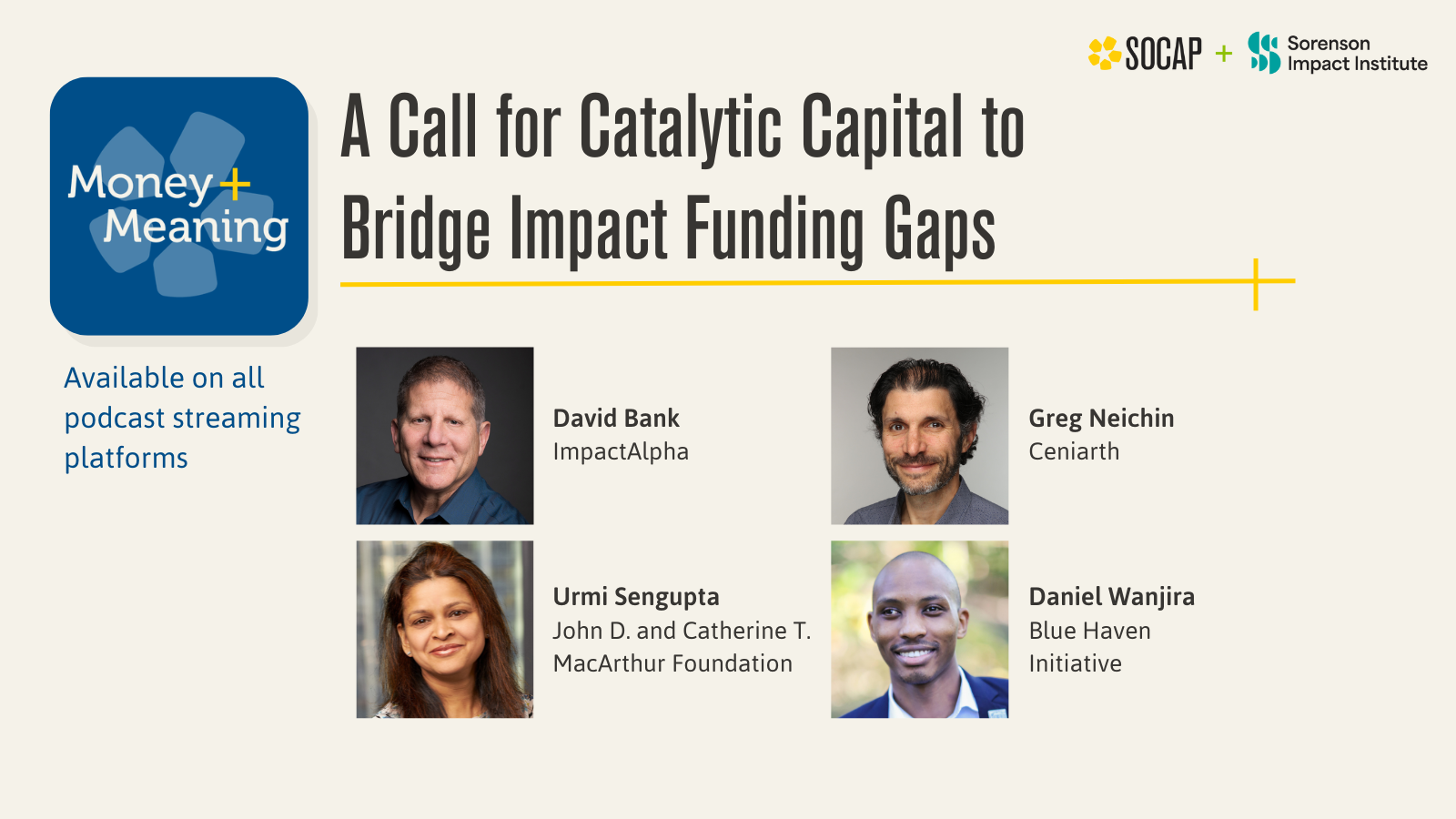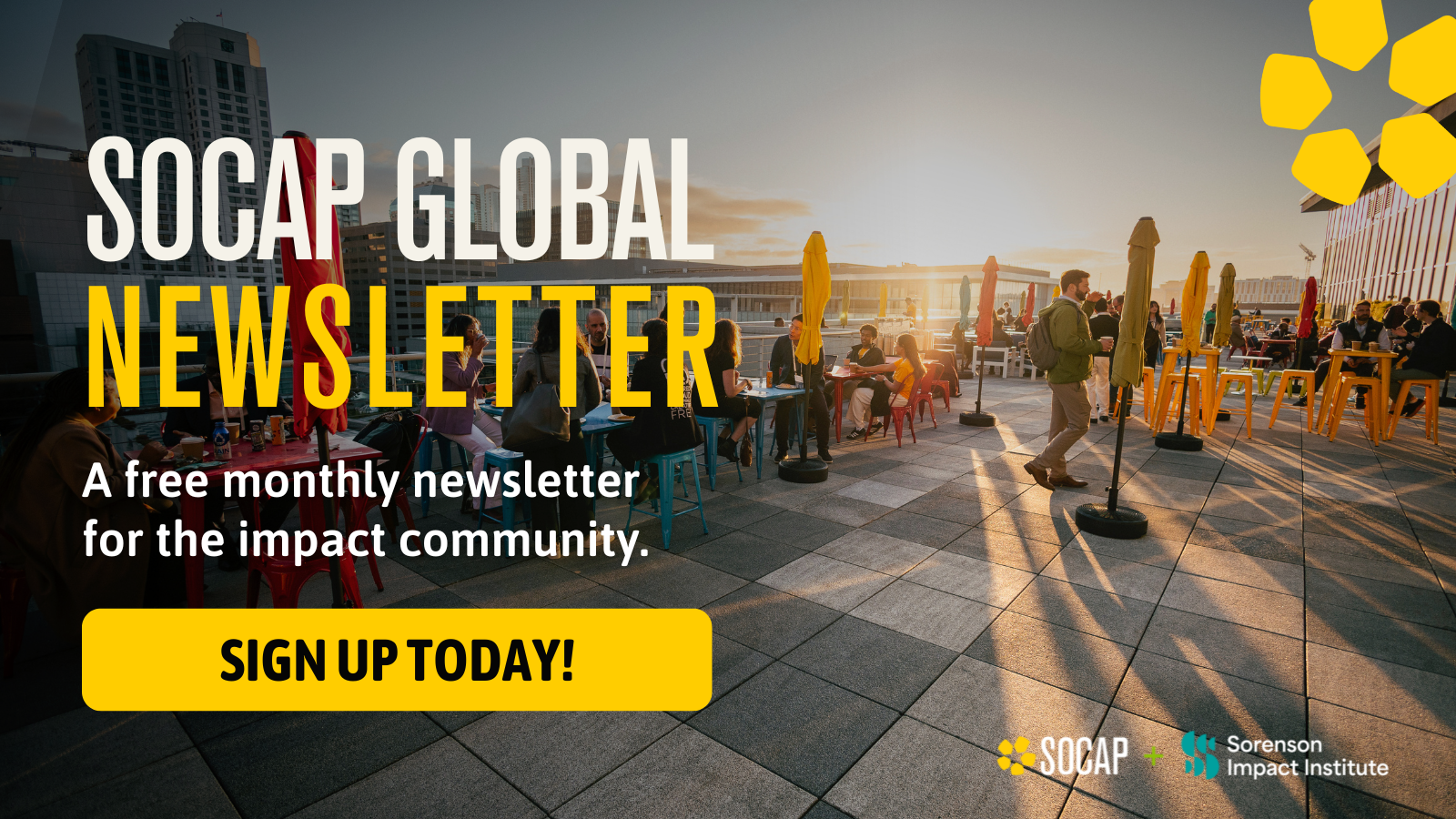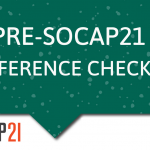An initiative launched to connect more entrepreneurs and communities with capital for impact is making an urgent call for additional funders and organizations. An influx of catalytic capital — investments that acknowledge the risk involved — is needed to address global social and environmental challenges and realize the full potential of impact investing.
Partners in the Catalytic Capital Consortium (C3) provide a look at their progress and plans for building this patient, flexible, and risk-tolerant investment field in a new Money + Meaning podcast. The conversation is pulled from a SOCAP24 conversation featuring:
- David Bank, Editor & CEO, ImpactAlpha
- Greg Neichin, Co-Managing Director, Ceniarth
- Urmi Sengupta, Field Support Manager and Senior Impact Investments Officer, John D. and Catherine T. MacArthur Foundation
- Daniel Wanjira, Director of Strategic Initiatives, Blue Haven Initiative
At Ceniarth, Neichin helps oversee investments for the single-family office of Diane Isenberg. Five years ago, Isenberg saw a need to do more with the funds and made the directive to shift the $700 million portfolio to impact-first investments. “We just recognized that in the places and communities we wanted to invest, the double-bottom-line sort of theory was not playing out; it just simply wasn’t getting capital into the hardest-to-reach places,” Neichin said.
As a C3 member, Ceniarth hopes to show other foundations — who may face board hesitancy or organizational guardrails — how to make a deeper, lasting impact. “In the end, these words — impact first, catalytic — it actually doesn’t matter. What matters is our dollars getting into communities in need,” Neichin said.
With a 40-year history of making catalytic capital investments, the MacArthur Foundation is familiar with the critical role that this funding plays. Sengupta said that was part of the motivation for launching the C3 in 2019 to demonstrate how catalytic capital can be used and to build the field by attracting more investors. “We are seeing interest from investors across the world in many, many different markets, and we’re very grateful to the impact investing networks that we are partnering with because those are surfacing some of these conversations,” she said. “The challenge is translating that interest into actual investment.”

MacArthur is leading the way on a parallel track, announcing recently that it will increase giving over the next two years. These cuts would affect social and environmental initiatives around the world, and the implications loom large as the U.S. is the largest funder of global humanitarian responses and spent $68 billion on foreign aid in 2023. In announcing the increase, MacArthur called on other organizations to follow its lead, noting that foundation funding was $103 billion in 2023, lagging the $267 billion in government grants awarded to nonprofits in 2021. To further support the impact ecosystem, MacArthur signed on to continue as a SOCAP multi-year partner.
Blue Haven Initiative also recognizes the need for additional philanthropic capital, Wanjira says, especially in developing markets. About five years ago, they started an initiatives portfolio that deploys grants and catalytic capital in the impact ecosystem. “That has two main purposes: building the infrastructure of impact investing and addressing market pain points that commercial capital isn’t addressing.”
Wanjira cited another Blue Haven project designed to demonstrate catalytic capital in action. Trimtab is an independent entity incubated with The ImPact and sponsored by a coalition of family offices, with design funding grant support from the MacArthur Foundation.
“It demonstrates how as an impact investor who has the ability to write philanthropic capital, you can use these different tools to support a project in different phases — from grant financing, warehousing capital, to participating as an investor,” Wanjira says.
Learn more about the impact and potential of catalytic capital in the full conversation:
Don’t miss out! Subscribe to Money + Meaning on Apple Podcasts, Stitcher, TuneIn, Spotify, or anywhere else you find podcasts.
Listen to more episodes of Money + Meaning here.







